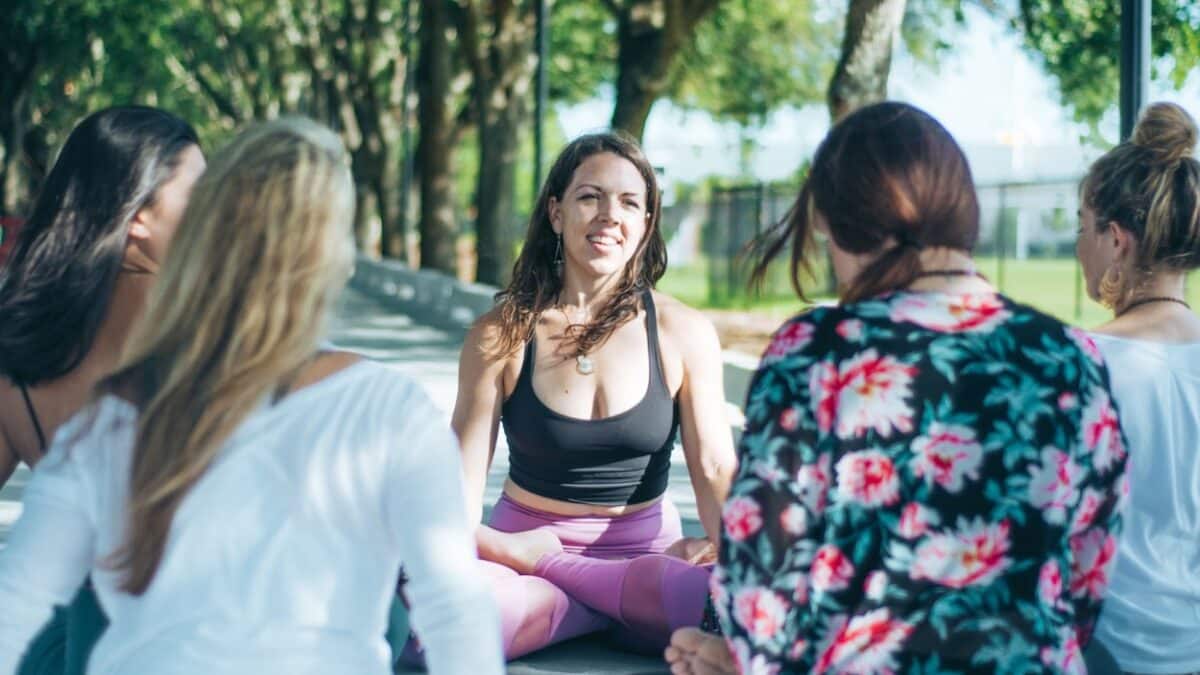
Breathe in deeply and fully. Feel the breath move in to fill the lungs as the physical body starts to awaken from a long nourishing rest at the end of your yoga class.
The body starts to find movement returning in gentle and familiar ways. As class comes to completion and you start to gather your belongings you notice it feels a little easier to breathe. As you move out into the world you notice you have more patience in your everyday encounters and small challenges begin to be easier to manage with presence and composure.
The benefits of our yoga practice are infinite. It can help you feel better in your body, increase strength, increase mobility, it can help you calm your mind, navigate major life changes, and so much more. Whatever it was that first brought you to your mat you’ve probably experienced additional benefits that you might not have even imagined possible from yoga postures and movements.
Yoga postures are a powerful tool for increasing balance in the physical body and when done with intentional breath and focus, the practice opens up opportunities for balance to return on multiple layers: physically, energetically, and mentally.
When those parts of us (body, energy, & mind) are in greater balance, it is possible to start connecting with the powerfully transformative practices taught as a means to deeply connect with ourselves, the world around us and the spiritual path of yoga.
The spiritual path of yoga grows from the foundation of the first two limbs of yoga as laid out in the yoga sūtras (a how-to book on yoga c. 400-500 C.E.) these limbs are the yama and niyama. They are guidelines for how we interact with ourselves and the world around us and help us to reduce suffering and experience increased peace within ourselves and our lives.
Each of these limbs has 5 components to practice, study and connect with in all moments of our life (on and off the mat).
- The 5 Yama
- ahiṁsā – non-violence in thought, word and deed
- satya – honesty and truthfulness in the words spoken, the thoughts which occupy the mind, the activities participated in, the food eaten, the way the body is treated, the way the home is kept, etc.
- asteya – non-stealing as a lifestyle, including ideas, behavior in relationships, and exchange of time, energy, thoughts, feelings, trust, generosity, etc.
- brahmacarya – celibacy and the conservation of sacred and vital energy
- aparigrahāḥ – non-grasping, allowing for a state of flow to exist within all connections.
- The 5 Niyama
- śauca – physical, energetic and mental cleanliness. One can strive to keep their environment clean, their physical body clean and their inner thoughts and intentions clean.
- saṃtoṣa – contentment in all situations, in every moment, allowing for opportunities to experience the vast network of connectivity which weaves the fibers of existence together
- tapaḥ – self-discipline, continuing to practice and observe the experiences of life and reduce suffering for ourselves and others
- svādhyāya – self-study, the repetition of mantras and the study of sacred/spiritual texts
- iśvarapraṇidhānām – connection to something which is greater than yourself or your preferred God.
These foundational limbs of yoga allow one to set out along a spiritual journey with a solid support while navigating a path toward less suffering and eventually true freedom.
When exploring ways to integrate these principles into your daily life and your individual growth, always start from the foundation of non-violence. This includes being non-violent with yourself as you navigate ways to grow and transform.
Sometimes the most harmful thoughts and ideas we have can be directed inward toward ourselves, especially as we gain greater understanding of how our actions impact others and contribute to the pain others experience. It can be really helpful to journal in some form about your experience with observing and identifying grow points in your practice of non-violence. Maybe you do a video journey where you record yourself talking out your thoughts. Maybe it is a physical journal where you write down words, phrases, stream of thought or essays about your experience. Maybe you journal out loud through conversation with a trusted companion.
Our yoga practice is vast and expansive, celebrate these practices with each breath and movement in your practice, there is much to be revealed through this study. Remember with each breath there is a small opportunity for a new beginning, a chance to transform and a chance to leave behind patterns, behaviors and reactions which can cause and contribute to harm. Each breath is a new opportunity to nurture a foundation of non-violence in thought, word, and deed; non-violence toward yourself, others and our shared world.
By Jessica Lynne Trese (she/her) | Learn more about her Ashtanga program, Workshops and Retreats at www.yogachikitsa.net
